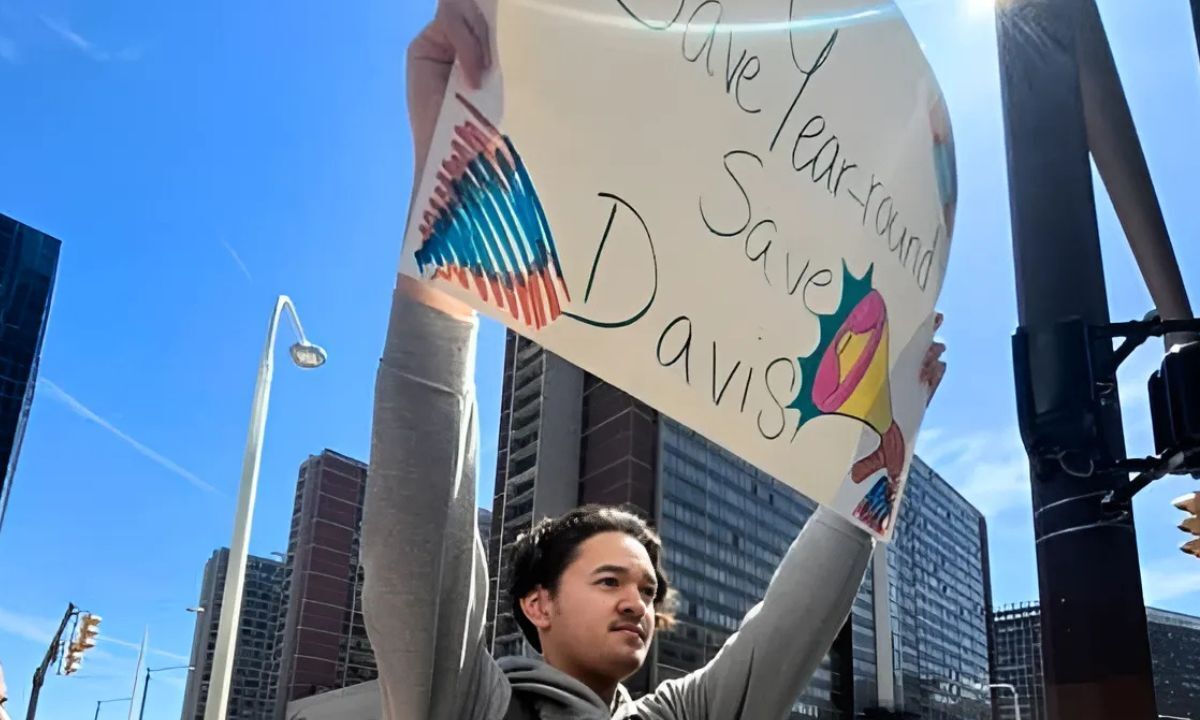Cleveland Ends Year-Round Schooling Citing No Meaningful Gains After 15 Years
Other states and school districts are still using the strategy, which aims to stop the ‘summer slide.’

Get stories like this delivered straight to your inbox. Sign up for The 74 Newsletter
The Cleveland school district is ending its 15-year attempt to use year-round classes to improve student learning in some schools, deciding last week to drop what the district and some experts once viewed as the best way for students to avoid the so-called “summer slide.”
Year-round schooling, which gained popularity in the 1970s, avoids long summer vacations in which students can forget much of what they learned during the school year. Under the plan, students attend classes as part of a normal grading period most of the summer. Their school years aren’t much longer than with a traditional schedule, just spread out differently, with their lost summer vacation days added to other breaks during the school year.
Cleveland’s move comes as some states like South Carolina and Florida have recently embraced or are trying out the approach, along with districts hoping to address pandemic learning loss. The number of schools using year-round schedules nationally fell from about 6% in the 1970s to under 3% before the pandemic, researchers report.
In Cleveland, previous district leaders once considered year-round school a promising way to turn around the struggling district. But it caught on in just six of Cleveland’s high schools, and new school leaders now want all district schools on the same calendar and curriculum so students aren’t lost if they change schools.
Leaders also aren’t convinced year-round school is helping. A district study this year with researchers from Cleveland State University and the American Institutes for Research showed the city’s year-round schools often have higher math and English scores than other high schools, but mostly because the schools have more gifted students and students who would do well with any schedule. Research nationally is also mixed.
District CEO Warren Morgan decided gains were not enough to justify the additional $2.6 million in teacher salaries year-round classes cost.
“There was no evidence that there was substantial, meaningful difference in the academic outcomes in our different calendar types,” Morgan said before the school board vote last week. “We also recognize and value the excellence of our many different schools …but there’s also other variables…that make them great.”
David Hornak, executive director of the National Association for Year Round Education, said the pandemic renewed interest in year-round school as a possible way to tackle COVID learning loss, as well as increasing interest in related strategies, like adding summer learning programs or extra school days to the start or end of the school year.
Hornak estimates about 4% of schools now have a year-round schedule, but the association has scaled back over the years and has no staff to track it.
He said students are less likely to forget lessons over a shorter summer vacation. Longer breaks during the year, often about three weeks long, give schools a chance to give struggling students targeted help catching up, rather than waiting until July for a summer school that feels like a punishment.
“I would love school leaders to consider summer as just another academic block of time,” he said.
Paul Von Hippel, a professor of public affairs at the University of Texas and prominent skeptic of year-round school, said he sees no difference in learning from just scheduling the same number of school days in different ways.
“Instead of having one long break where students forget a lot, you have a bunch of short breaks where students forget a little,” Von Hippel said. “The amount of forgetting adds up to be about the same.”
He added that though the pandemic prompted districts to consider year-round classes, he sees no evidence that they have caught on in a meaningful way.
Teachers, parents and students of Cleveland’s six year-round schools, however, fought the district CEO and implored the district school board at two hearings to keep a schedule they say made their schools unique and offered students chances they wouldn’t have with a standard school year.
Students from one year-round school even protested the change outside district headquarters last month.
Xavier Avery, a junior at Davis Aerospace and Maritime High School who organized the protest, reminded the school board right before its vote April 29 that his school has received state awards and has better test scores than the district average. He also said that students spend part of school days in warmer months on boats and planes, both learning to operate them and studying Lake Erie as part of the school’s specialized focus.
“Our year-round calendar plays a huge role in this success,” he said. “It’s what makes our programs, internships and hands-on learning possible.”
Cleveland also cut other non-traditional schedules as part of its push to put all schools on the same schedule. Morgan and the school board also axed extended school years, which added extra days at 17 other schools, as well as extended days, running 30 minutes longer each day at six schools. Those cuts drew more fire from parents, who said that being able to choose schools that offer extra time keeps them in the district, rather than selling their homes and moving to suburban districts.
Year-round schools started gaining national attention in the 1970s, experts say, for two major reasons. In some cases, most notably fast-growing California where schools were too small to handle exploding enrollment, schools spread classes out over the whole year so they could stagger student schedules to accommodate all of them.
The other major draw, the one that appealed to Cleveland, was limiting “summer learning loss” or “summer slide,” where students forget much of what they learned during long vacations.
A 2019 summary of year-round schooling studies found mixed results, with Black, Hispanic and low-income students more likely to see gains and the staggered schedules in California more likely to show losses.
California stopped using that strategy after building new schools for all its students.
The total also fell as cities like Salt Lake City and Chicago dropped the approach several years ago after not seeing big academic gains. Post-pandemic data was not readily available.
Educators still see promise in the approach. A quarter of South Carolina schools and three school districts in Florida are now testing year-round classes for several years.
Other school districts in Dallas and Philadelphia are trying a related, though different, approach: simply adding voluntary days to the year to reduce summer slide and to help students who are behind catch up, whether from the pandemic or just needing more class time. Richmond, Virginia, has also added extra mandatory days to the school year at a few struggling schools, though parent complaints squashed attempts to do that for the whole district.
Cleveland’s experiment with year-round school started in 2009 at a specialized STEM school created as a magnet for the city’s top students. Former Cleveland school district CEO Eric Gordon soon after considered moving the entire district to year-round schedules.
In launching a district turnaround plan in 2012, he jokingly dismissed the traditional school year as an “agrarian calendar we currently use so that all of my students are free to bring in the harvest every summer.”
Gordon said the district could close half the gap between his students and higher-performing suburban students by eliminating the accumulation of 12 years of summer slides before graduation.
But attempts to use a year-round calendar at one large neighborhood high school failed after parents objected to students losing summer breaks and its effect on family vacations, summer jobs and school schedules of siblings on regular schedules.
A lack of air conditioning in some old schools and parent objections to a much-smaller change — starting the school year earlier in August than before — put plans to use the schedule at more schools on hold.
The year-round schedule ended up at no neighborhood schools and just six schools the district created with alternative class styles — a school based in a hospital or one focused on learning through digital art projects — that families could pick, but not be assigned to.
Get stories like these delivered straight to your inbox. Sign up for The 74 Newsletter

;)
